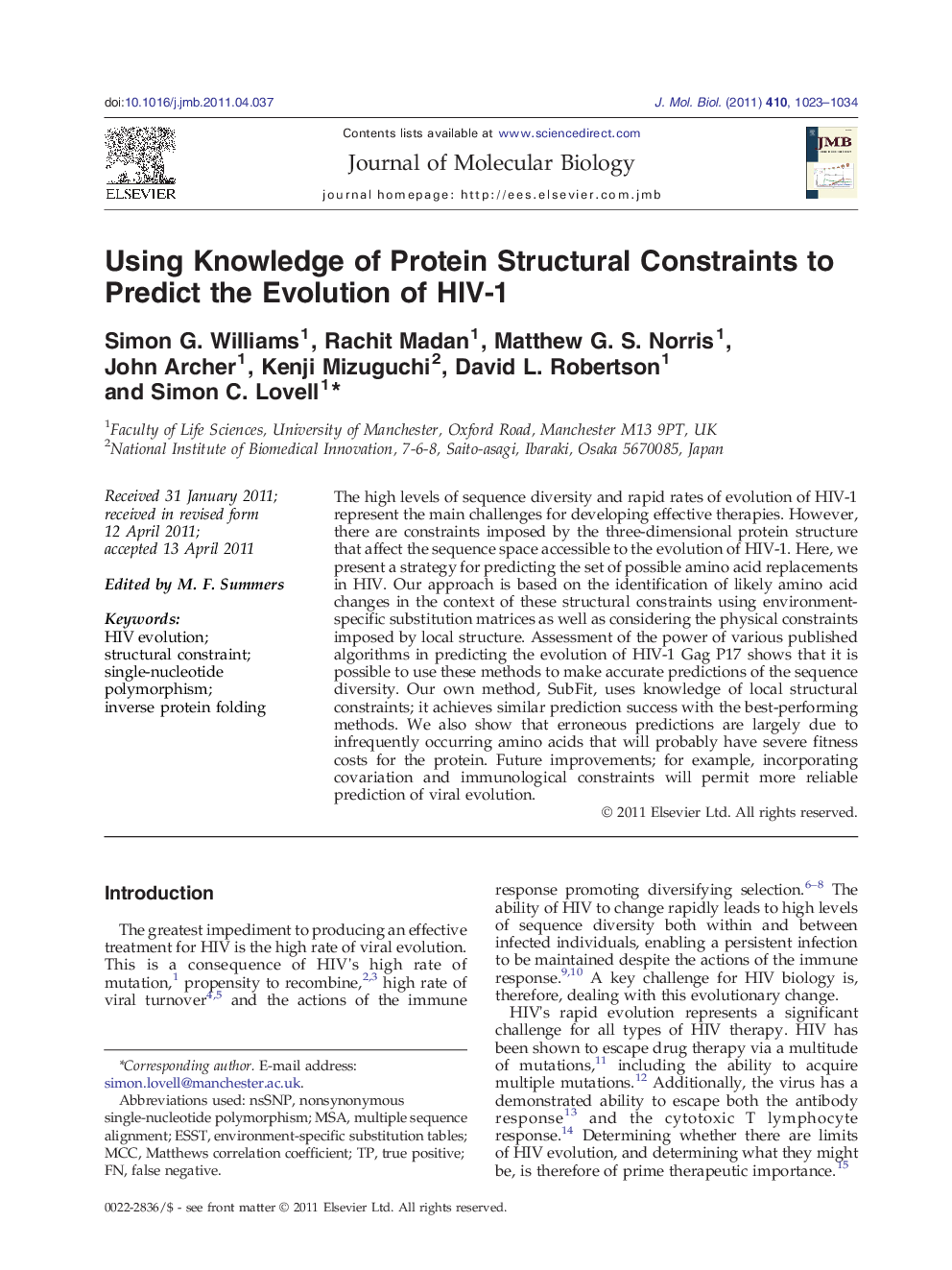| Article ID | Journal | Published Year | Pages | File Type |
|---|---|---|---|---|
| 2185001 | Journal of Molecular Biology | 2011 | 12 Pages |
The high levels of sequence diversity and rapid rates of evolution of HIV-1 represent the main challenges for developing effective therapies. However, there are constraints imposed by the three-dimensional protein structure that affect the sequence space accessible to the evolution of HIV-1. Here, we present a strategy for predicting the set of possible amino acid replacements in HIV. Our approach is based on the identification of likely amino acid changes in the context of these structural constraints using environment-specific substitution matrices as well as considering the physical constraints imposed by local structure. Assessment of the power of various published algorithms in predicting the evolution of HIV-1 Gag P17 shows that it is possible to use these methods to make accurate predictions of the sequence diversity. Our own method, SubFit, uses knowledge of local structural constraints; it achieves similar prediction success with the best-performing methods. We also show that erroneous predictions are largely due to infrequently occurring amino acids that will probably have severe fitness costs for the protein. Future improvements; for example, incorporating covariation and immunological constraints will permit more reliable prediction of viral evolution.
